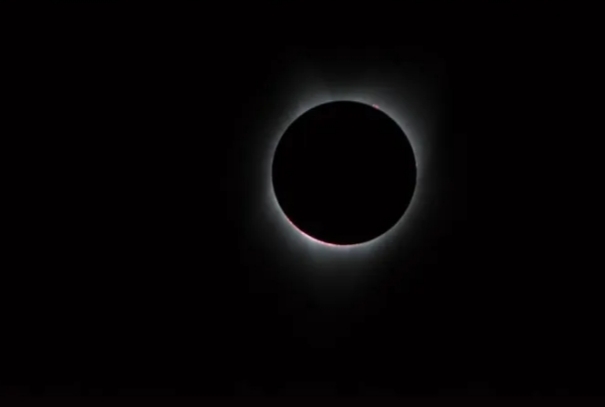
Americans will turn to the sky on April 8th for a total eclipse in the afternoon inorder to get a glimpse of the "double diamond ring", a rare phenomenon when two slivers of the sun suddenly and simultaneously appear to meet and flash and extinguish.
The double diamond ring will appear as the last bit of sunlight before the sun is completely blacked out by the moon.
There is great anticipation as the two rings are set to appear as two trains of fine bits of sunlight, a phenomenon known as " Baily's beads" though it will only be visible near center of the eclipse path from Mexico to New Brunswick in Canada.
The total eclipse will last roughly four and half minutes as the moon passes directly over the sun.
NASA discourages the use of the direct naked eye yo view the eclipse with risk of causing severe eye injuries.
The stargazers are advised to wear speciliazed glasses or handheld eclipse viewer and further caution has been set on using cameras or telescopes.
The stargazers in North America have been fortunate to have an opportunity to witness two solar eclipse in six months following an annular eclipse that swept through the Pacific Northwest into the South west and Eastern Pacific.
The eclipse called a "ring of fire" eclipse was visible for roughly 70 million Americans as NASA estimated.
It was also the last annular eclipse in North America until June 2039.
The last total solar eclipse over the U.S came in August 2017 when over 215 million people were able to catch the moon block the sun.
Predictions also say that the next total eclipse won't come until 2033 in Northern Alaska and again not until 2044.
Meanwhile the moon's action of surpassing the sun in rotation movement is affiliated with a change in seasons which comes about as a land mark shift from the dry to wet season in the tropics.
Whereas in the America's spring shortfall is expected as temperatures will begin to slowly rise inceasing the evapo-transpiration rate.
NASA, the American aeronautical and space administrative center pledged to provide live updates on the eclipse debut only for a third time eversince the on start of the 21st century.
The eclipse will be visible starting 11a.m American local time, in the Mexican states of Sinaloa and Durango along the pacific coast before crossing on a north eastern path into Texas around 12:30 pm in local time.
Expected to end at around 4:30 local time in New Brunswick Canada, the eclipse will also be visible in other dozen states in the U.S such as Oklahoma, Kentucky, Maine, New Hampshire, Indiana, Ohio, Missouri, Arkansas,Vermont,Illinois, Pennsylvania and New York.











